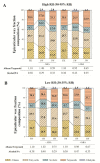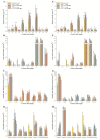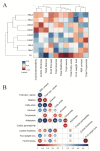The Combination of Abscisic Acid (ABA) and Water Stress Regulates the Epicuticular Wax Metabolism and Cuticle Properties of Detached Citrus Fruit
- PMID: 34638581
- PMCID: PMC8549707
- DOI: 10.3390/ijms221910242
The Combination of Abscisic Acid (ABA) and Water Stress Regulates the Epicuticular Wax Metabolism and Cuticle Properties of Detached Citrus Fruit
Abstract
The phytohormone abscisic acid (ABA) is a major regulator of fruit response to water stress, and may influence cuticle properties and wax layer composition during fruit ripening. This study investigates the effects of ABA on epicuticular wax metabolism regulation in a citrus fruit cultivar with low ABA levels, called Pinalate (Citrus sinensis L. Osbeck), and how this relationship is influenced by water stress after detachment. Harvested ABA-treated fruit were exposed to water stress by storing them at low (30-35%) relative humidity. The total epicuticular wax load rose after fruit detachment, which ABA application decreased earlier and more markedly during fruit-dehydrating storage. ABA treatment changed the abundance of the separated wax fractions and the contents of most individual components, which reveals dependence on the exposure to postharvest water stress and different trends depending on storage duration. A correlation analysis supported these responses, which mostly fitted the expression patterns of the key genes involved in wax biosynthesis and transport. A cluster analysis indicated that storage duration is an important factor for the exogenous ABA influence and the postharvest environment on epicuticular wax composition, cuticle properties and fruit physiology. Dynamic ABA-mediated reconfiguration of wax metabolism is influenced by fruit exposure to water stress conditions.
Keywords: ABA deficiency; Pinalate; fruit dehydration; gene expression; hormone application; postharvest.
Conflict of interest statement
The authors declare no conflict of interest.
Figures






References
MeSH terms
Substances
Grants and funding
LinkOut - more resources
Full Text Sources

